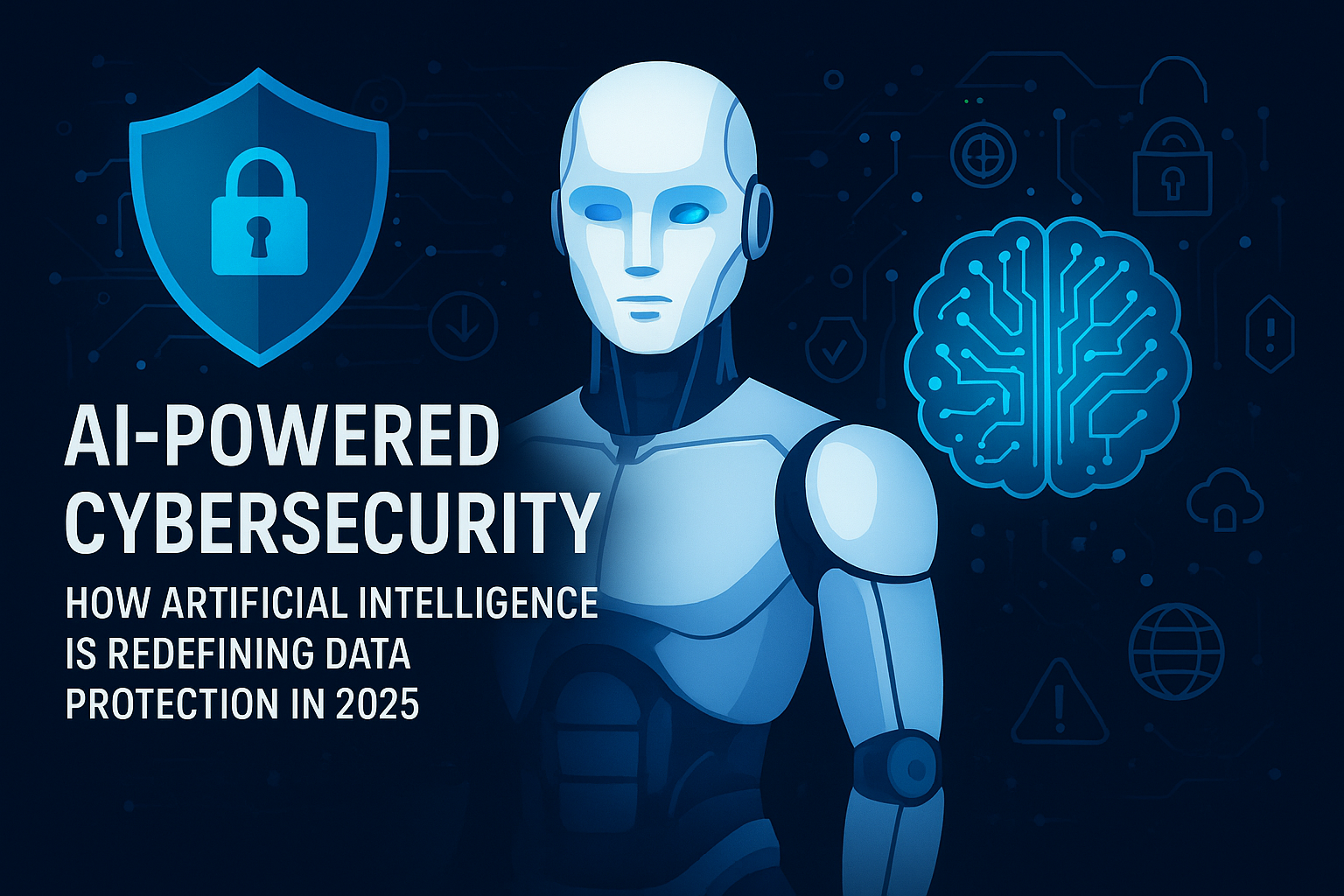
The year 2025 marks a turning point in digital defense. As technology evolves, cyber threats have become faster, smarter, and more unpredictable. Hackers now use AI to automate attacks, bypass firewalls, and exploit vulnerabilities faster than human analysts can respond.
Thank you for reading this post, don't forget to subscribe!In this high-stakes environment, artificial intelligence (AI) is no longer a futuristic luxury; it’s the core of cybersecurity itself.
Today’s leading tech companies, from global corporations to African startups, are adopting AI-powered cybersecurity systems that detect anomalies, predict attacks, and learn from every attempt in real time. This article explores how AI is transforming cybersecurity in 2025, the opportunities it creates, and how businesses can leverage this revolution to protect their data.
1. Why AI Has Become the Backbone of Cyber Defense
Traditional cybersecurity relied heavily on static firewalls, antivirus tools, and human monitoring. But cybercriminals have evolved — they now use machine learning (ML) to launch adaptive, self-modifying malware that can’t be stopped by rule-based systems.
AI changes the game by:
-
Learning from patterns of user behavior to detect suspicious activity.
-
Automating threat response, reducing human error, and reaction time.
-
Predicting vulnerabilities before attackers can exploit them.
For example, AI-driven platforms can analyze millions of logs per second, detect anomalies in network traffic, and isolate potential threats instantly. This proactive protection is why AI is now at the heart of cybersecurity infrastructure worldwide.
2. How Artificial Intelligence Enhances Cybersecurity
AI doesn’t just detect threats — it thinks, learns, and evolves. Here are key ways AI enhances cyber defense:
a. Real-Time Threat Detection
AI systems continuously scan networks, cloud services, and IoT devices.
When a deviation occurs say, a login attempt from an unusual location or a large data transfer at an odd time the system flags and investigates it within seconds.
b. Predictive Analytics
Using machine learning algorithms, AI models can predict potential attack routes based on historical data.
This allows businesses to patch vulnerabilities before cybercriminals exploit them.
c. Automated Response
Instead of waiting for manual approval, AI can quarantine affected systems automatically, block suspicious IPs, or isolate compromised devices to prevent lateral attacks.
d. Behavioral Biometrics
AI also protects user accounts through biometric and behavioral patterns, such as typing speed, mouse movement, or smartphone orientation. Any unusual behavior triggers an authentication challenge.
3. Machine Learning and the Rise of Autonomous Security Operations
In the age of data overload, even the most skilled human teams struggle to process every alert.
AI steps in with autonomous security operations that analyze and prioritize alerts with near-zero downtime.
These AI-driven Security Operation Centers (SOC) combine ML, big data analytics, and natural language processing (NLP) to:
-
Reduce false positives
-
Identify insider threats
-
Shorten incident response time from hours to seconds
For instance, large enterprises like Google and Microsoft have deployed AI-based SOCs that automatically block phishing campaigns, predict data leaks, and adapt to new threat behaviors instantly.
4. Zero-Trust Security: The 2025 Standard
“Never trust, always verify” that’s the mantra of Zero-Trust Security, a model that assumes every access request could be a potential threat.
In 2025, AI plays a crucial role in enforcing zero trust by:
-
Continuously validating users and devices before granting access.
-
Monitoring data flow between applications
-
Detecting and stopping suspicious internal movements
Read More: How to Take Advantage of the 2026 Tax Reform: Smart Money Moves for Professionals
This model is especially vital for remote teams and cloud environments, where multiple users and endpoints interact daily.
With AI-driven authentication and encryption, businesses can minimize insider risks and secure sensitive assets even against advanced AI-powered attacks.
5. Challenges and Ethical Concerns of AI Cybersecurity
While AI is powerful, it’s not flawless. Businesses must consider the following challenges:
a. Data Privacy
AI systems rely on massive datasets to learn often including sensitive or personal data. Mishandling such data can create compliance risks under GDPR, NDPR, or other data-protection laws.
b. Algorithmic Bias
If AI models are trained on biased data, they may misclassify threats or overlook certain attack patterns, leading to security gaps.
c. Over-Reliance on Automation
Human oversight remains crucial. Without skilled cybersecurity experts validating AI decisions, organizations risk false security and missed anomalies.
6. The Future: Careers and Skills in AI-Driven Cybersecurity
The fusion of AI and cybersecurity is creating new career opportunities that didn’t exist a few years ago.
Roles like AI Security Analyst, Cyber Threat Data Scientist, and Machine Learning Security Engineer are now in high demand across global tech ecosystems.
Institutions such as GWC Tech School Africa are equipping African talents with the practical skills to thrive in this new digital frontier, offering training in:
-
Cybersecurity Fundamentals
-
AI and Machine Learning Applications
-
Ethical Hacking and Penetration Testing
-
Data Protection and Digital Forensics
As companies across Nigeria, the UK, and beyond digitize their operations, AI-driven cybersecurity professionals will be the guardians of tomorrow’s digital economy.
7. Practical Steps for Businesses to Adopt AI Cybersecurity in 2025
-
Integrate AI Threat Detection Tools – Deploy platforms that use ML to analyze logs and detect anomalies.
-
Adopt a Zero-Trust Framework – Treat every access request as unverified until proven safe.
-
Train Teams Continuously – Human-AI collaboration ensures a resilient defense system.
-
Monitor AI Ethics – Regularly audit AI models to avoid bias or data privacy breaches.
-
Invest in Cloud Security Automation – Protect multi-cloud and hybrid infrastructures with AI-enabled firewalls.
8. Conclusion: Building a Safer Digital Future with AI
As cyber threats grow more complex, AI is no longer optional, it’s essential.
It offers speed, intelligence, and predictive capabilities beyond human capacity, enabling businesses to detect and neutralize attacks before they cause damage.
However, the real power lies in combining AI automation with human expertise. When organizations balance innovation with ethics, and training with technology, they not only protect their data, they build digital trust.
In 2025 and beyond, those who invest in AI-driven cybersecurity will lead the way toward a safer, smarter, and more resilient digital world.






